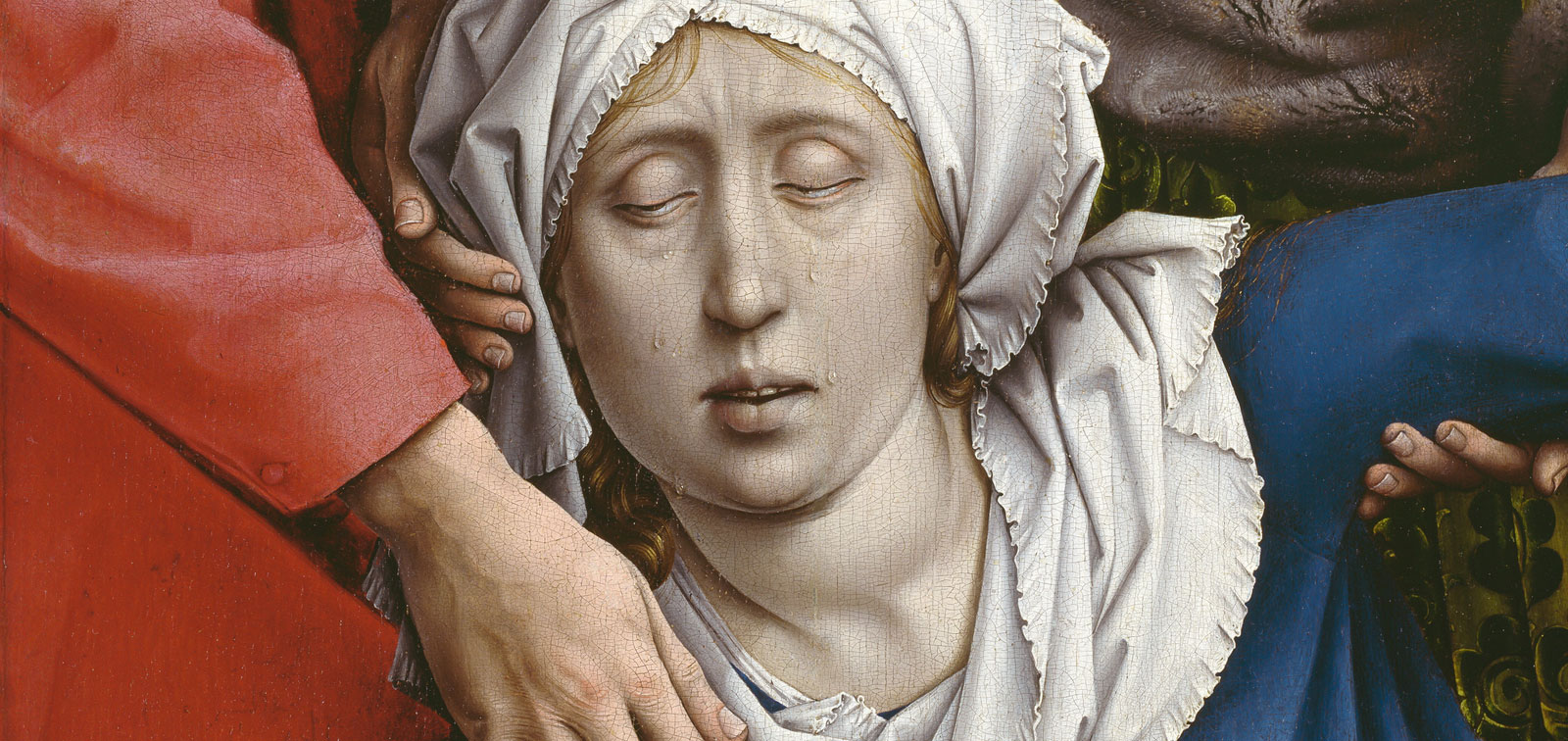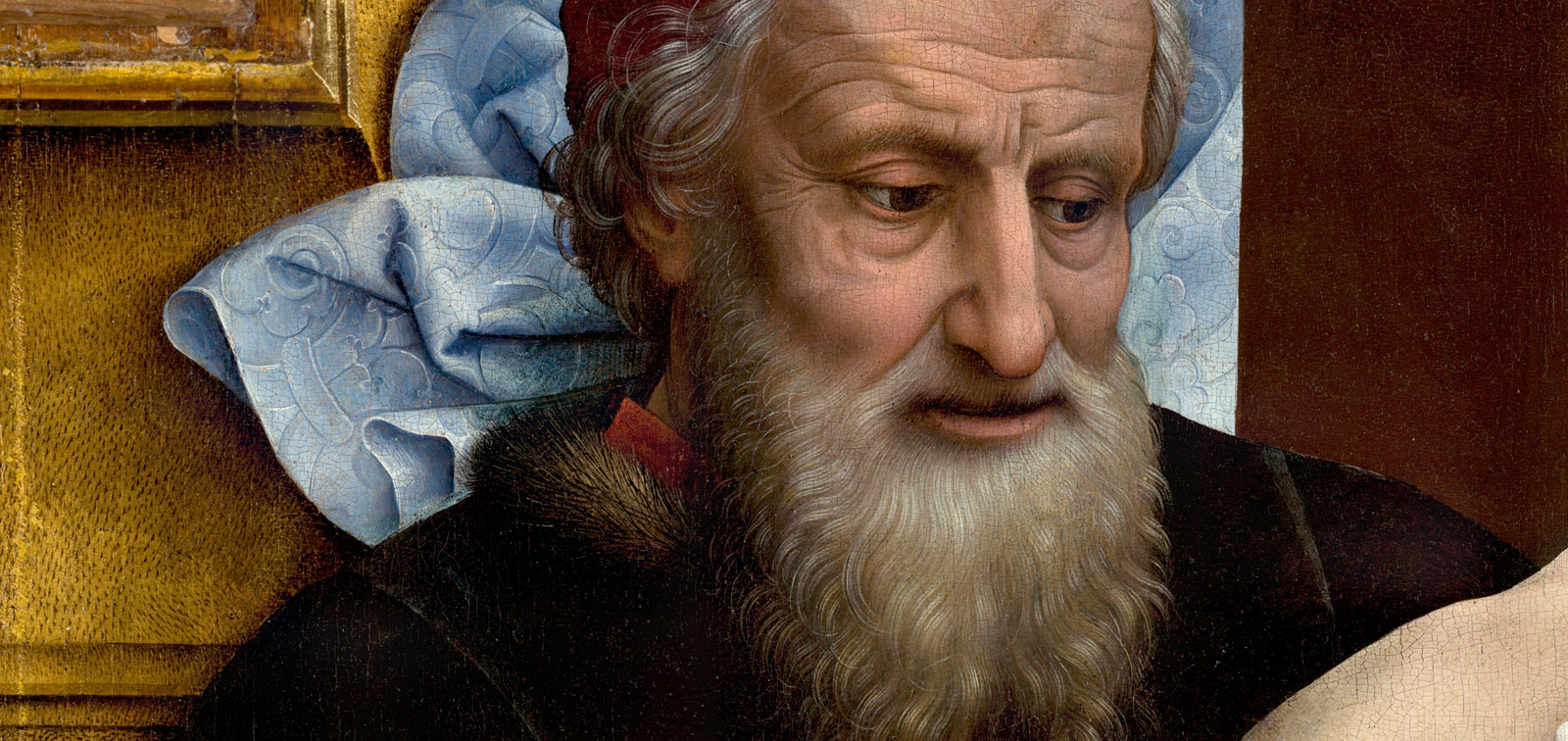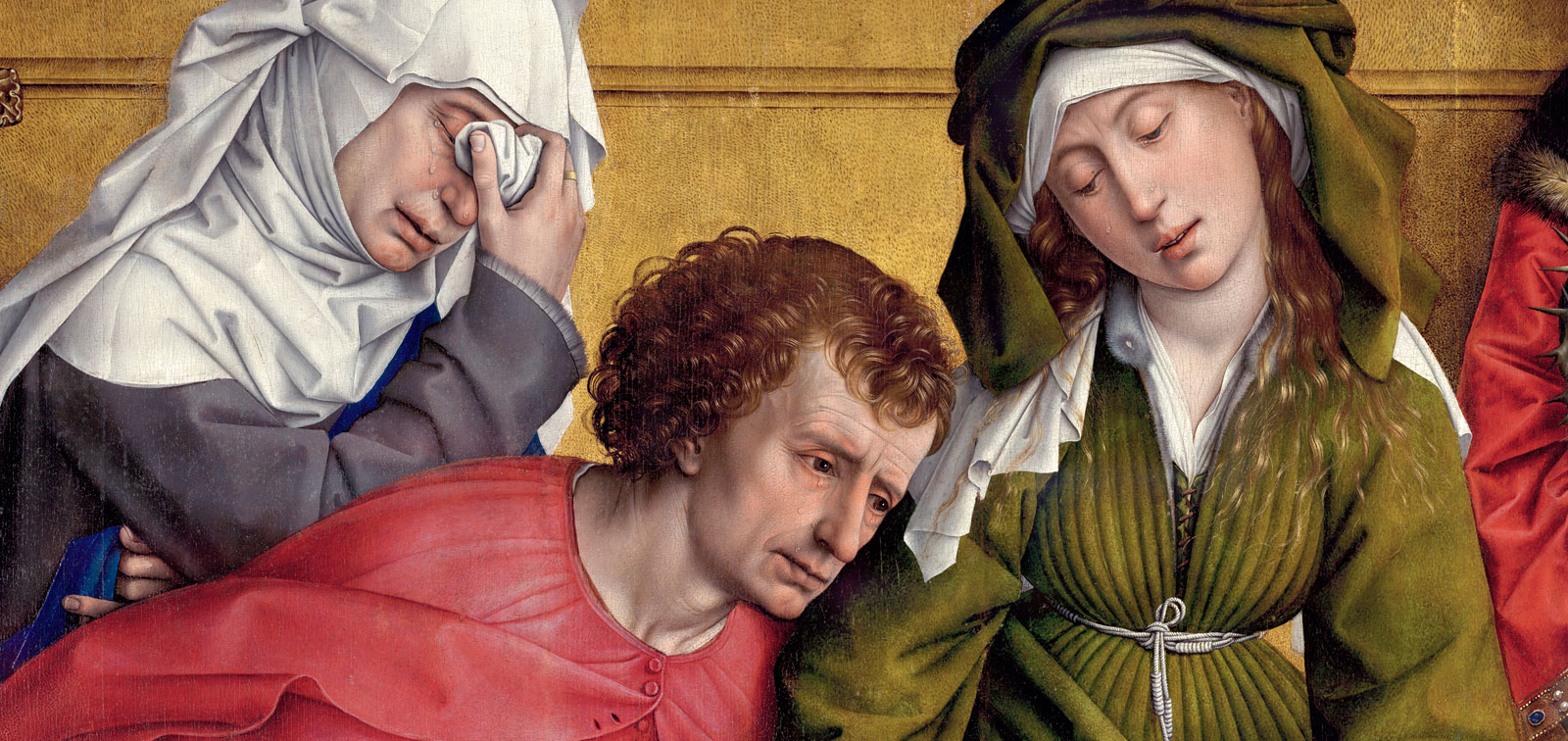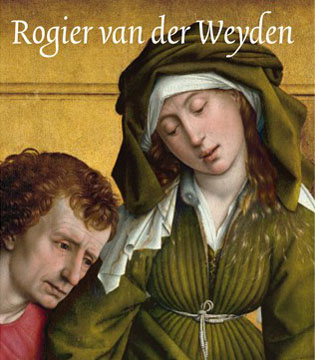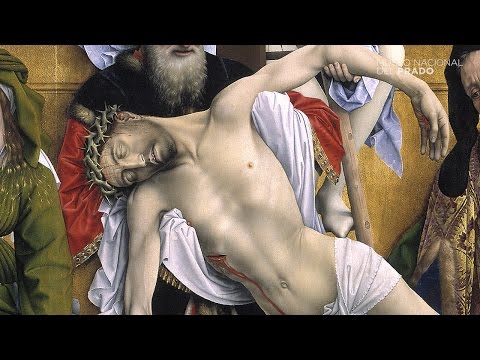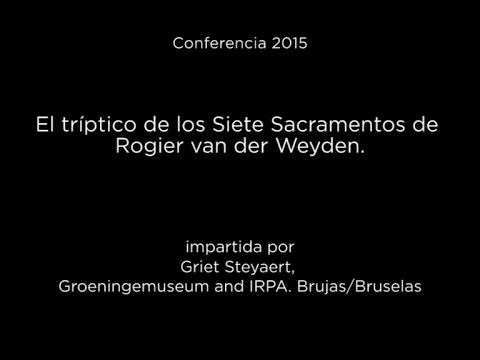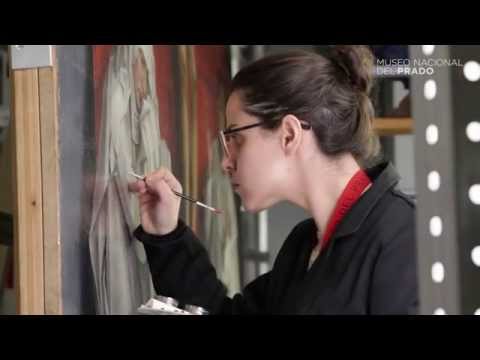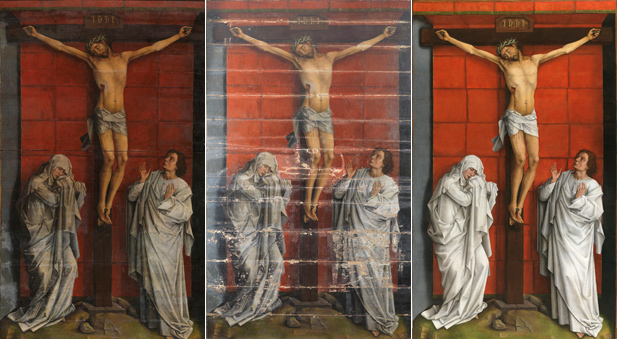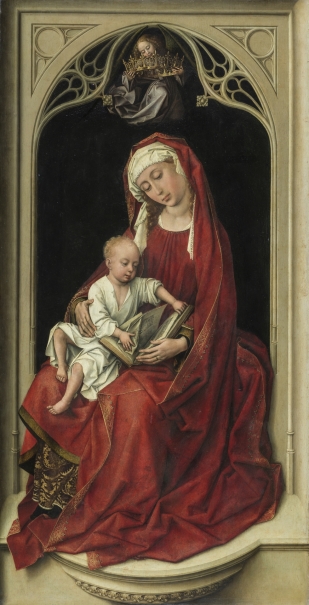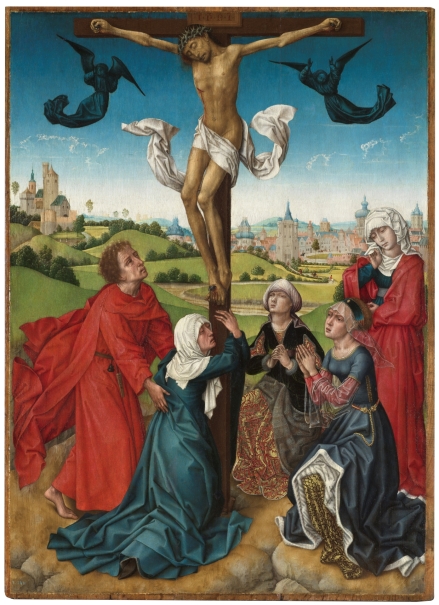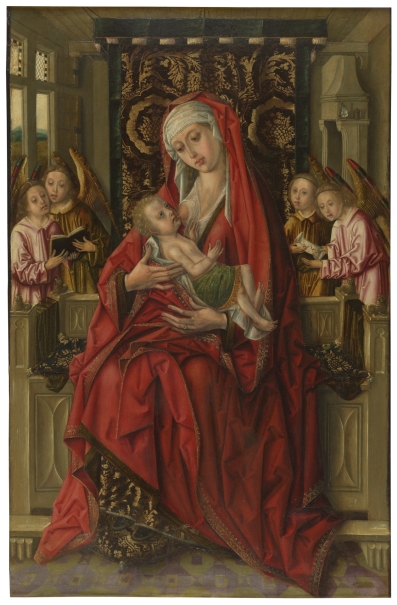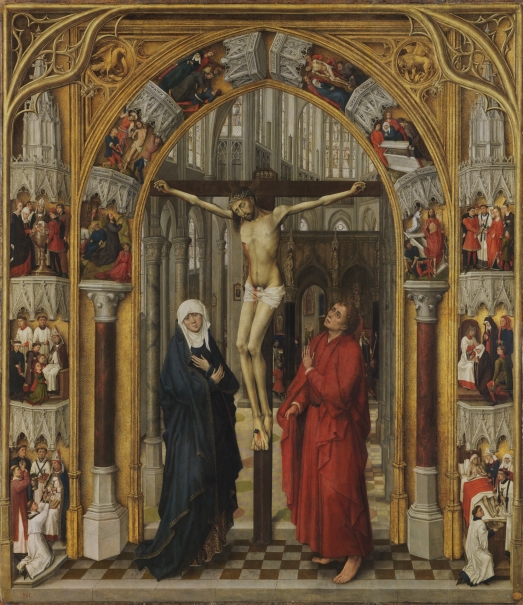Rogier van der Weyden’s Crucifixion, from the Monastery of San Lorenzo del Escorial, is one of the painter’s most impressive and original works on account of the grandeur and expressiveness of its figures in an extremely simple composition. It is furthermore one of the very few works by the painter that can be authenticated by documents from the time the artist gave it to the charterhouse of Scheut in Brussels, its original location.
The work’s various locations and the different interventions it had undergone throughout more than 500 years had influenced its aesthetic appearance and the conservation of the support and paint layer.
The technical documentation work (dendrochronology, pigment analysis, X-radiography, infrared and ultraviolet reflectography), together with work on the support and picture surface of the Crucifixion has restored the painting to its original state, making it possible to confirm Van der Weyden’s authorship and to date it specifically to a period between 1455, the earliest possible year the panel could have been used, and 1464, the year of the painter’s death.
The recent intervention has restored the sensation of three-dimensionality of the figures, whose volume was distorted by a thick layer of grey repainting. The new X-ray image and infrared reflectography indicate that it was a very well thought out work, as no major changes were made to the composition, with an extremely carefully executed underdrawing.
Intervention on the support
For this imposing composition (3.24 x 1.94 m.) the painter used fourteen Baltic oak planks that were assembled horizontally.
The present intervention consisted chiefly in stabilising the panel to restore its balance and fit it with a secondary support to allow it to be handled without impairing its interpretation. This new frame, which was adapted not only to the curvature of the work but also to its intrinsic deformities, was joined to the original structure with springs that permit natural movements of the wood both in-plane and out-of-plane ad well as expansion, contraction and warping in order to ensure its conservation.
Intervention on the paint layer
Following the preliminary study of the initial state of the work and a first cleaning, an in-depth intervention was carried out to eliminate the additions that were distorting the true quality of Van der Weyden’s painting and to fill in the losses with traditional gesso and later retouch them.


